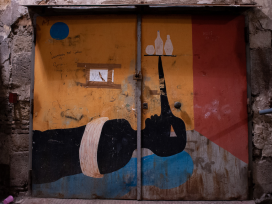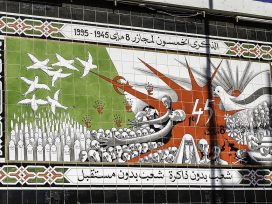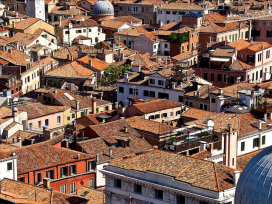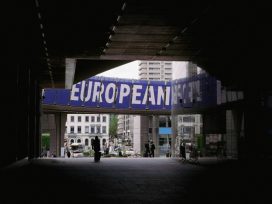After an illustrious past as a ‘laboratory city’, Matera today finds itself at the centre of attention once again, thanks to it having been declared the European Capital of Culture 2019, and is being rediscovered by national and international tourism. In the middle of the last century, the city – a land hitherto forgotten by history – launched a project of urban reform, which at the same time covered a large territory, to trial a model of development that would guide the project to modernize the south. A city of only 30,000 inhabitants attracted the attention of a whole world of intellectuals, artists and writers who found in this reality, apparently frozen in time, signs of anticipation of the future.
The description of Matera and of Basilicata by Carlo Levi in Christ Stopped at Eboli (1945) would mobilize ideas and projects. Starting from the issue of the Sassi, where a population still lived, cheek by jowl with modernity, in cave houses, and from the multiplicity of perspectives that their significance was gradually producing: the ‘archaic peace’ of rural life, images of unheard-of poverty, a place steeped in symbolic values, a dense space of historical and artistic testimonies, an anthropological and cultural centre. These are images which cross-contaminated each other and which characterised the various different meanings of the label ‘laboratory city’ that Matera had assumed: a laboratory of the modern (the experiment of the Piccinato Plan and of the architectural competitions for the new quarters), an anthropological laboratory (a label which applied to Matera, but also to the whole of the Basilicata), a socio-territorial laboratory (the urban and socio-economic reformism of Adriano Olivetti). The Matera issue was also a laboratory for individual intellectuals, who found in this city the ideal terrain for artistic experiments and practices, required by the particular conditions of ‘marginality’; first and foremost, Pasolini’s anachronistic Jerusalem in The Gospel According to St. Matthew, where the inhabitants of the Sassi become the only inheritors of his universal message. Matera as a laboratory of marginality, where being on the margin was not always perceived negatively.
In the space of forty years the Sassi, within the context of a revision and updating of the notion of heritage, have gone from being a source of national shame to an exemplary case of the rehabilitation of historical centres: thanks to a state law and the arrival of substantial public subsidies at the beginning of the seventies, the launch of an international competition would lead the Sassi in 1993 to be recognised as a UNESCO site, completing a long process of re-evaluation of their historical, artistic and anthropological significance.
The recent history of Matera is no different from that of many Italian cities, with the end of the ‘Matera urban laboratory’. There were the same years of hope of an entrepreneurial future for Matera, where ‘big is beautiful and eats up the small’: the Padua, Quinto and Mulino Alvino pasta factories closed, swallowed up by Barilla; along the route of the Matera-Altamura reunification, a variant of the Piccanto Plan Prg/73, chasing the entrepreneurial dream of a rural capital, abandoned the direction it was taking towards Potenza and headed instead towards Bari and Puglia, placing a market-highway with extensive areas of industrial and commercial sites in Borgo Venusio. The worksites started with what remains one of the main economic activities of the city, construction. Thus, Matera consolidated its character as a dual city, composed of juxtaposed cities that do not look towards each other.
With regard to the socio-economic configuration in 2001, the composition of employment here was moving decisively towards manufacturing activities: food, furniture and the metal industry were still the main productive activities, and even if the contraction of local units and workers had continued in the most recent years, some businesses were introducing product innovations and seeking new markets; they were seen as custodians of a heritage of industrial culture necessary to ground the micro enterprises which were operating in the composite world of the cultural and creative industries. The latter, together with offering tourism services, already represented 11% of employees by 2011, and their integration into a tourism-cultural-creative supply chain is set to become one of, if not the, main productive specialisations of the city of Matera. The city is also the detached academic seat of the University of Basilicata, born as a proactive response by culture and science to the great earthquake that hit the region (in November 1980), offering a training pathway strongly anchored in the values of architecture, the environment and heritage. One cannot help but notice both the good and the bad points which characterise the local and regional scene: the low demographic density and the diminishing proportion of the younger age groups, the under-provision of infrastructure; but also the low crime rate in the city and the region, its frugality and resilience, the modest scale of poverty.
Matera today is an urban laboratory. The award of the title European Capital of Culture in 2019 was made not so much because of what the city shows itself to be, as because of cultural policies which aim to pursue recognition over the course of four successive years. One cannot overlook the risk that, instead, the policies for the city might not succeed in going beyond the short term, taking the award as simply the goal of the process, consuming the urban scene without undertaking a course of change and effective experimentation in governing the city, with medium- and long-term structural policies.
It’s a legitimate doubt for Matera, when one thinks of the tendency of communication policies to evaporate. Meanwhile, with the over-exposure of the Sassi – their representing once again fantasies of the picturesque and the vernacular – chosen as the backdrop to every initiative to be undertaken, or as surreal places for luxury stays, what is missing is the historical story of the city, the complexity of the urban phenomenon and the unique connection between Matera and the region from which it takes its strength. It is often forgotten that Matera, located in a communal region that is among one of the largest in Italy, and with two parks and four protected areas (about 8,300 hectares), overlooks the breathtaking panorama of the Parco della Murgia Materana and, beyond, a regional territory which is all one huge park. Matera as a territory-city, gateway to a hidden ‘internity’, overlooking the Ionian from which the Pollino and Appennino can be seen, is the pole of a Murgian polycentric system, together with Altramura and Gravina. Matera is a park-city because it is the link between regional and inter-regional parks, with 30% of the territory having a high natural value, ranking second in Italy in terms of scale.
The existence of substantial funds collected for the ‘Matera 2019’ project, in contrast with the economic difficulties in which the urban administrations find themselves, is giving the urban agenda legs, opening worksites that have been on the shelf for a long time, strengthening the cultural infrastructure (via new cultural containers and modernisation of the existing ones) and upgrading the city (with new urban centres and regeneration of the surrounding areas.)
Matera, the only provincial capital not linked to the national railway network, aims to improve its connections, by road with Bari-Altamura, thanks to the doubling of the SS 96, and by rail with the enhancement of the service to and from Bari, Potenza and other neighbouring centres in Lucano via the Ferrovie Appulo-Lucane (Appulo-Lucano Railway), reducing in particular journey times between Bari and Matera (from the current 95 minutes to an envisaged 59 minutes) thanks to an improvement in the capacity limits on that section. The scope of this connection will have unimaginable consequences for relations between the Bari metropolitan area and Matera and its nearby and more distant territories.
For the Matera area, the integration of links with the Bari metropolitan basin is crucial, above all in order to improve accessibility; at the same time Bari could garner, through the strong appeal of Matera, meanings and values from its internal areas, and reinterpret and exploit the complexity of its Murgian ‘inland’.
Matera’s ecosystem is alive but still immature. For it to mature there needs to be a change in the mindset of business and administrative culture, to ensure that the arrival of substantial public financing leads to a change in methods and mentality, through understanding the advantages of teamwork and complementarity. The ongoing debate is very rich; the professional and cultural profile of those who feature in it is high.
This is perhaps also a good opportunity to update the ways of governing cities involved in important events. The Expo and post-Expo of Milan is not the only possible formula for a city’s success. Other models could be developed and proposed for the whole country, because the final goal should be to explore the possibility that culture may be a constructive factor in new competencies and mentalities; and whether all this, then, is able to contribute in a significant manner to improving people’s lives.








